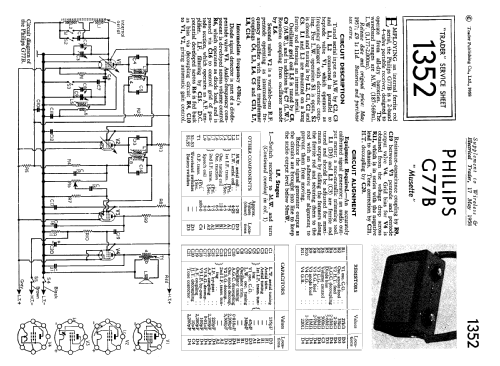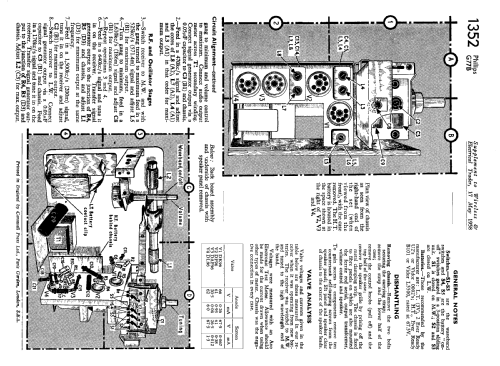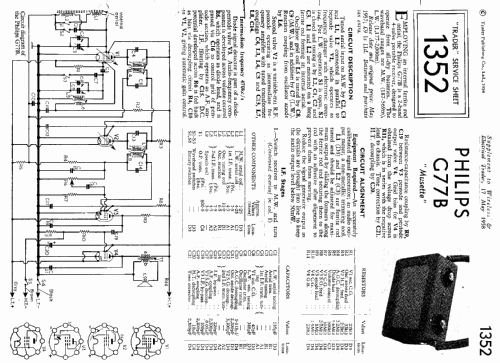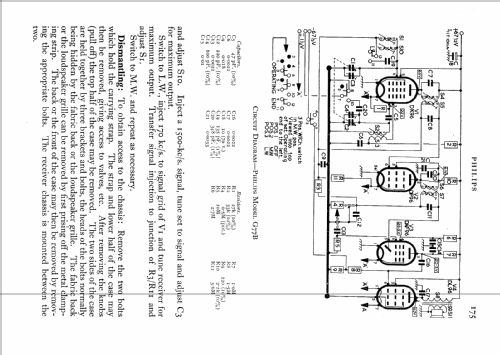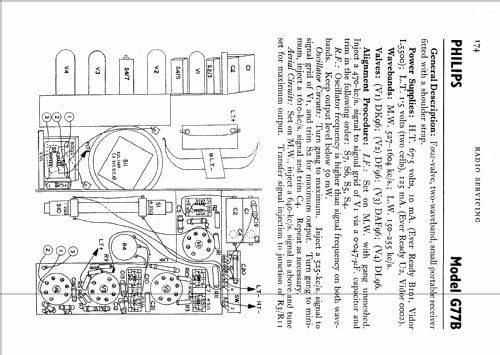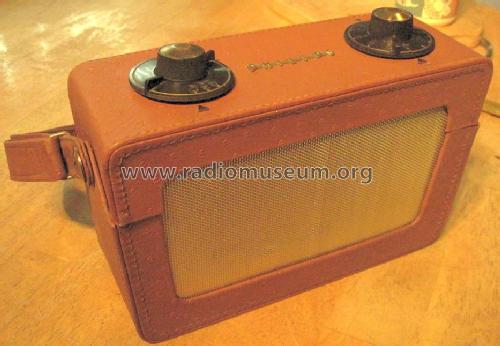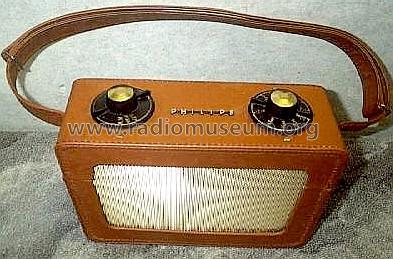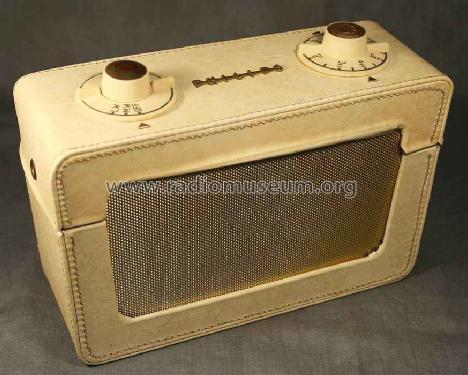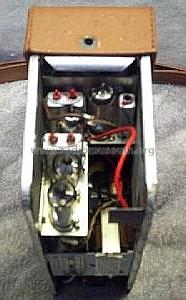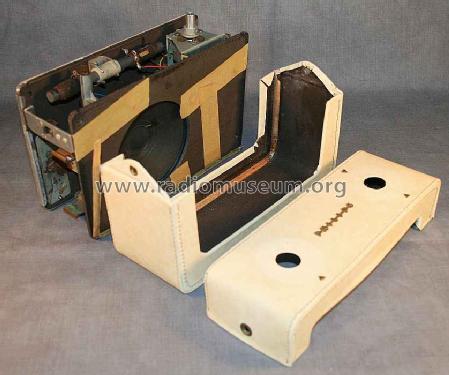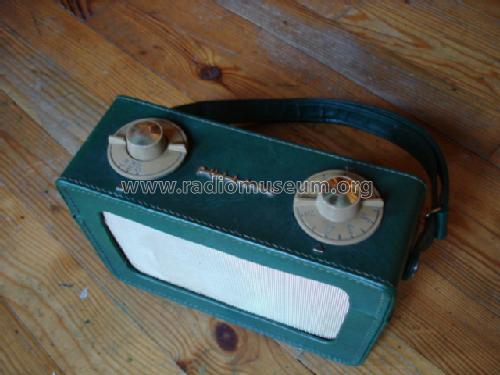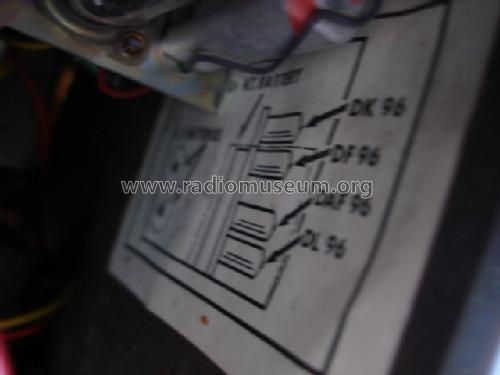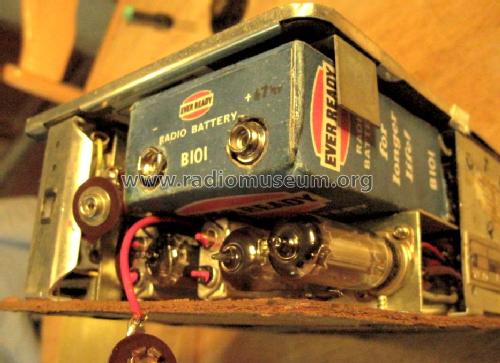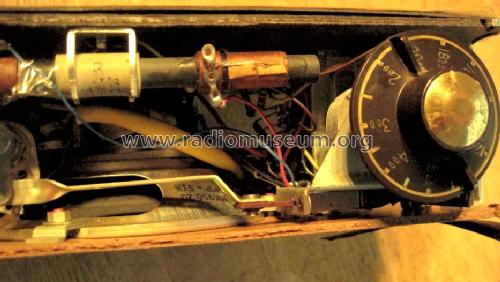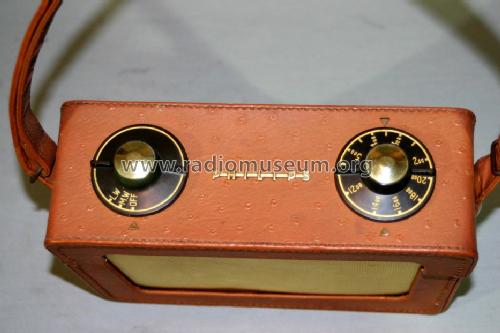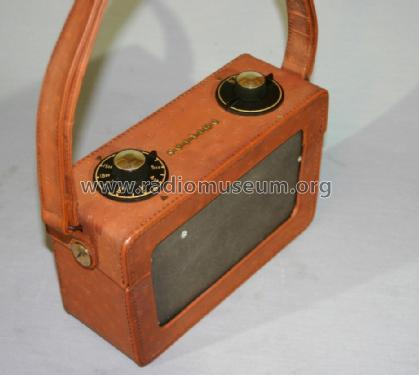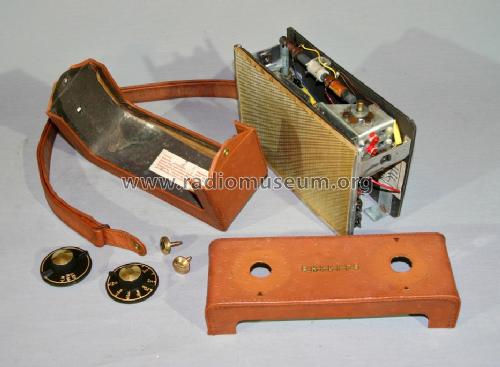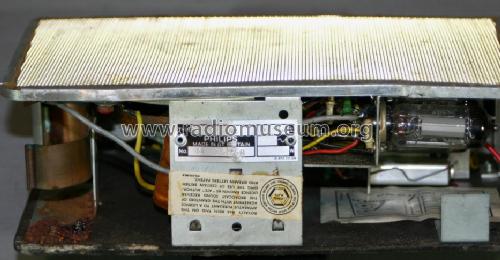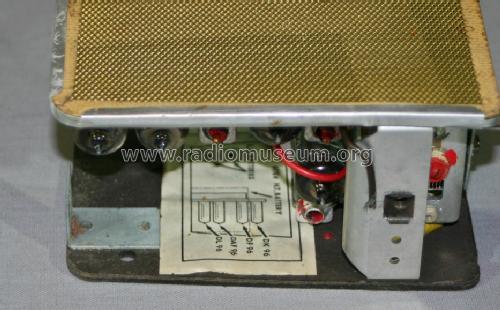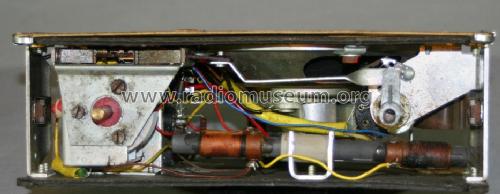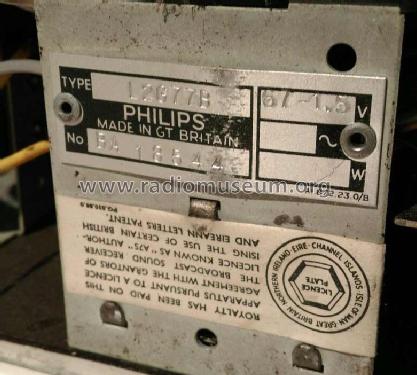Musette L2G77B
Philips Electrical, Lamps, Industrial - Miniwatt; London
- Country
- Great Britain (UK)
- Manufacturer / Brand
- Philips Electrical, Lamps, Industrial - Miniwatt; London
- Year
- 1957
- Category
- Broadcast Receiver - or past WW2 Tuner
- Radiomuseum.org ID
- 87429
Click on the schematic thumbnail to request the schematic as a free document.
- Number of Tubes
- 4
- Main principle
- Superheterodyne (common); ZF/IF 470 kHz; 2 AF stage(s)
- Tuned circuits
- 6 AM circuit(s)
- Wave bands
- Broadcast (MW) and Long Wave.
- Power type and voltage
- Storage and/or dry batteries / 1.5 & 67 Volt
- Loudspeaker
- Permanent Magnet Dynamic (PDyn) Loudspeaker (moving coil)
- Material
- Leather / canvas / plastic - over other material
- from Radiomuseum.org
- Model: Musette L2G77B - Philips Electrical, Lamps,
- Shape
- Portable set > 8 inch (also usable without mains)
- Dimensions (WHD)
- 240 x 160 x 85 mm / 9.4 x 6.3 x 3.3 inch
- Notes
-
Das Gehäuse und Tragegriff mit hellem braunem Lederimitat (Carton covered with vinyl). Die Front ist aus goldfarbenem Metall.
The handle screws are removed and the bottom sleeve sides off to change batteries. 2 x D size Zinc carbon cells in parallel for 1.5V LT (125mA max) and B101 or equivalent 67.5V HT pack with Snap Carr connections (typically 6.5mA).
The chassis is also used in the Musette L3G83B
Warning Fire Risk! Alkaline Cells are about twice capacity at 125mA, but the entire case is positive, and the metal top cap shorts to the negative spring the + contact unit is mounted on. The top of an Alkaline cell will also contact the speaker rim (which may also short the cell). There are two self-tapping screws on the negative base plate which may cut the cell cover and short. In the Zinc-Carbon or Zinc Chloride, only the top cap is positive, the case is negative, and one with the base unless a so-called "leakproof" construction. Best to fit a card washer to the top of the cell and an additional sleeve!
- Price in first year of sale
- 9.00 GBP
- Circuit diagram reference
- Radio and TV Servicing books (R&TVS) book
- Literature/Schematics (1)
- Trader Sheet 1352. Paul Stenning CD Vol 1
- Author
- Model page created by Klaus Ortwein. See "Data change" for further contributors.
- Other Models
-
Here you find 427 models, 305 with images and 286 with schematics for wireless sets etc. In French: TSF for Télégraphie sans fil.
All listed radios etc. from Philips Electrical, Lamps, Industrial - Miniwatt; London
Collections
The model Musette is part of the collections of the following members.
